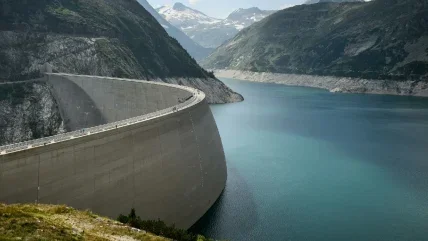
As interest grows in untapped hydropower potential across the Balkan region, authors of a new paper published in Science of the Total Environment express concern about the area which is considered to have some of the best conserved rivers in Europe. With plans to develop numerous hydropower dams, Carolli et al say conflict between policies which promote renewable hydropower and those which prioritise river conservation has ensued, and this can only be resolved with the help of reliable information.
Described as a global hotspot for freshwater biodiversity, the authors claim that the Balkans is also one of the world's regions with the greatest proportion of native freshwater fauna threatened by hydropower development. Predictions suggest that more than 60% of native endangered freshwater fish could become extinct or near extinct if all planned hydropower projects were built.
Information on the continuity of Balkan rivers is scant and barrier data hard to obtain, and this can make the assessment of current levels of fragmentation and the evaluation of the impacts of planned hydropower particularly difficult to assess.
In their study, Carollie et al assessed the extent of river fragmentation in the Balkan region by building on a recent pan-European inventory of longitudinal barriers. This enabled them to calculate several indices of river connectivity and identify the best connected (ie least fragmented) basins. Secondly, they used what if simulations to estimate the loss of connectivity that could occur under different scenarios of planned hydropower plant construction and additional hydropower capacity, while also accounting for dam location in relation to conservation hotspots. They simulated nine dam construction scenarios that varied depending on the number, location, and size of the planned dams.
The authors’ analysis estimated that in order to achieve a 25GW increase in hydropower capacity a ~50% loss in river connectivity would occur if small dams were built, compared to a ~20% loss building large dams. Simulations in the Austrian Alps also indicated that building small run-of-river projects would cause more cumulative ecological impacts than building a smaller number of larger dams of the same combined capacity. Likewise, the authors state the construction of many small hydropower plants in Brazil is expected to result in a loss of connectivity five times greater than that caused by the construction of large hydropower dams.
Fragmentation
Balkan rivers are currently fragmented by 83,017 barriers and have an average barrier density of 0.33 barriers/km (after correcting for barrier underreporting). This is 2.2 times lower than the mean barrier density found across Europe and serves to highlight the relatively unfragmented nature of these rivers. However, this new analysis shows that all simulated dam construction scenarios would result in a significant loss of connectivity compared to existing conditions. The largest loss of connectivity (-47%), measured as reduction in barrier-free length, would occur if all planned dams were built, 20 % of which would impact on protected areas. The smallest loss of connectivity (−8 %) would result if only large dams (>10 MW) were built. In contrast, building only small dams (<10MW) would cause a 45% loss of connectivity while only contributing 32% to future hydropower capacity.
Carolli et al claim that micro-hydro development has widely been promoted as a less impactful alternative to the construction of large dams, but believe their study and others indicate the cumulative impacts of small run-of-river dams can be considerable.
“We found that many dams being planned in Bulgaria will contribute little to hydropower production but have a disproportionately high impact on fragmentation, while some dams in Greece and Montenegro will have more favourable trade-offs,” the authors state. “In Romania, small HPPs make up 69–86 % of existing hydropower dams but provide only ~3 % of the country's electricity production. Clearly a critical reappraisal of the benefits of building small hydropower dams is urgently required,” they conclude.
The authors go on to add that they believe their results can help decision makers understand the trade-offs between new hydropower developments and fragmentation, particularly the small benefits and high impact of small hydropower stations, as well as helping identify those dams that will have a high impact on fragmentation and a low contribution to energy production.
Strategic Environmental Assessments (SEA) in the Balkan rivers do not currently consider the impacts of hydropower and so development “has tended to proceed with little or no strategic planning, or adequate consideration of cumulative impacts at the scale of entire river basins or regions”, the authors go on to claim in their study.
“We suggest that any further hydropower development in the Balkans should be subjected to SEA at the basin level in a way that explicitly acknowledges the loss of connectivity and the wider impacts of barriers on river biodiversity,” they add, stressing that hydropower schemes which “generate substantial energy with minor environmental impacts on fragmentation and biodiversity should be prioritised”.
“Ultimately,” Carolli et al say, “the aim of our study was to help decisionmakers better understand the consequences of planned hydropower developments by quantifying trade-offs between gains in hydropower capacity and losses in river continuity.”
Reference:
Mauro Carolli, Carlos Garcia de Leaniz, Joshua Jones, Barbara Belletti, Helena Huđek, Martin Pusch, Pencho Pandakov, Luca Börger, Wouter van de Bund. Impacts of existing and planned hydropower dams on river fragmentation in the Balkan Region. Science of The Total Environment, Volume 871, 2023, 161940. ISSN 0048-9697. https://doi.org/10.1016/j.scitotenv.2023.161940.






